Angela Ackerman's Blog: Writers Helping Writers, page 48
July 20, 2022
Phenomenal First Pages Contest
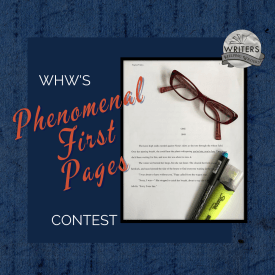 Hey, wonderful writerly people! It���s time for our monthly first-page critique contest
Hey, wonderful writerly people! It���s time for our monthly first-page critique contest 
If you���re working on a first page (in any genre except erotica) and would like some objective feedback, please leave a comment. Any comment :). As long as the email address associated with your WordPress account/comment profile is up-to-date, I���ll be able to contact you if your first page is chosen. Just please know that if I���m unable to get in touch with you through that address, you���ll have to forfeit your win.
Two caveats:
 Please be sure your first page (double-spaced in 12-point font) is ready to go so I can critique it before next month���s contest rolls around. If it needs some work and you won���t be able to get it to me right away, let me ask that you plan on entering the next contest, once any necessary tweaking has been taken care of. Resources for common problems writers encounter in their opening pages can be found here.
Please be sure your first page (double-spaced in 12-point font) is ready to go so I can critique it before next month���s contest rolls around. If it needs some work and you won���t be able to get it to me right away, let me ask that you plan on entering the next contest, once any necessary tweaking has been taken care of. Resources for common problems writers encounter in their opening pages can be found here.
 This contest only runs for 24 hours, start to finish, so get your comment in there!
This contest only runs for 24 hours, start to finish, so get your comment in there!
Three commenters��� names will be randomly drawn and posted tomorrow morning. If you win, you can email me your first page and I���ll offer my feedback.
We run this contest on a monthly basis, so if you���d like to be notified when the next opportunity comes around, consider subscribing to our blog (see the right-hand sidebar).
Best of luck!
PS: If you want to amp up your first page, grab our helpful First Pages checklist from One Stop for Writers. And for more instruction on these important opening elements, see this Mother Lode of First Page Resources.The post Phenomenal First Pages Contest appeared first on WRITERS HELPING WRITERS��.
July 19, 2022
Identify Your Character���s Emotional Triggers
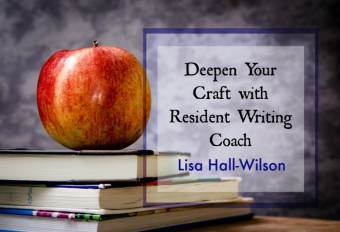
By Lisa Hall Wilson
Every one has emotional triggers ��� are you using this to increase the emotional tension in your story? Why not!?
What Does Your Character Think is Their Strength?What does your character pride themselves on having, being, doing, possessing, needing, controlling, etc? Do they rest their identity in any of these things? Some common ones are: acceptance, respect, being liked, being needed, freedom, attention, being in control, autonomy, safety, etc.
It could be a strength or aptitude that was reinforced when they were young. A child identified as gifted at a young age might place all their identity and self-worth in being smart, in being the smartest person in the room. How would they feel when faced with a new colleague who is smarter, faster, more innovative? What would that do to their self-confidence?
This where personality plays into things. Would they react in anger and lash out, gossip, try to undermine the new colleague at every opportunity? Would they sink into shame and beat themselves up constantly? Would they become competitive and work themselves into the ground to maintain what they believe they���re owed or due?
A woman who���s always told how pretty she is might begin to expect that compliment from people, from men in particular. What thought takes root if that doesn���t happen? What emotions come to the fore if she���s in the room when another woman gets all the compliments and not her?
Emotional triggers are often linked to anything a character feels they���re really good at, that they deserve, something they see as their personal identity, or that they���re constantly striving for (feeling heard by a spouse for example).
What Does Your Character Value Most and Fears Having Taken Away?This is where the primary and secondary emotions come into play. You can read more about that here ��� but to recap a primary emotion is an instinctive emotional response: fear, guilt, envy, jealousy, attraction. A secondary emotion is any emotion that requires a thinking response: love, anger, hatred, shame, etc.
Anger and shame and love are always secondary emotions.
Some emotions can be either a primary or secondary emotion. For example, attraction can be an instinctive thing (a primary emotion), but it can also develop over time with familiarity (a secondary emotion).
An emotional trigger skips the primary emotion phase and jumps right to the thinking response ��� the secondary emotion. That���s why you can instantly be angry at something and not know why.
So, for example, I have a character with an emotional trigger of feeling high maintenance. If she perceives that people think she���s being high maintenance, too-big-for-her-britches, because it���s a learned response (one that she���s practiced many times) she skips right to feeling shame. The shame is what���s observable (showable in actions or dialogue). The shame is what I show when writing this emotional trigger.
What Emotions Are Activated When Key Needs Are or Aren���t Met?
Activated is another way to say triggered, but in this context it seems more descriptive. Once you���ve identified the feelings or fears that are emotional triggers for your character (and yes you can have more than one), figure out what emotions are activated when that situation crops up.
You have to think in terms of secondary emotions here. Do they immediately become angry? Are they riddled with shame? Do they feel loved? Remember, triggers don���t have to be negative!
Now, to manage or overcome an emotional trigger, an individual needs a good measure of self-awareness and humility. Then, as Brene Brown would say, they need to get curious. Why do they feel that way? What do they feel is at stake?
How to Show and Not Tell an Emotional TriggerIn my Method Acting For Writers Masterclass, I talk about how primary emotions are usually felt and secondary emotions are usually seen. How does that play out?
Eliza���s husband is three hours later coming home than he said he���d be, without answering texts, emails or phone calls to explain the delay. Eliza has shipped the kids off to grandma���s for the night, prepared a nice dinner, and gotten all dressed up ��� as a surprise.
By the time hubs arrives home, Eliza has cleared the romantic setting from the table, put all the still-edible bits of food in the fridge, and Eliza���s changed out of the sexy outfit she���d been wearing into a terry bathrobe.
During the whole clean-up, her primary emotions are going wild. Frustration (feeling taken for granted). Concern (did something happen at work). Fear (was he in an accident). Jealousy (was there another woman). You���d show all these emotions colliding around inside through physiology, actions, and internal dialogue.
Once hubs arrives home and is safe ��� oh, whoops ��� went out for drinks did I forget to text you? Now she has to DO something with these emotions so now she���s angry. But if Eliza had an emotional trigger of say��� feeling in control, then not knowing where her hubs was when he was supposed to be at home would be a trigger for a secondary emotion. Having her well-thought-out plans for the surprise would be an emotional trigger.
Emotional triggers can be powerful and effective, because they���re so often over-the-top emotional reactions. When your emotional triggers are activated, you���re not just angry ��� you���re livid. People can observe these night-and-day emotional hairpin turns. They seem to come out of nowhere if you���re not privy to what the trigger is.
Are you using emotional triggers in your novel?What is your character afraid will be taken away or threatened?
 Lisa Hall-Wilson
Lisa Hall-WilsonResident Writing Coach
If Lisa had a super-power it would be breaking down complicated concepts into digestible practical steps. Lisa loves helping writers ���go deeper��� and create emotional connections with readers using deep point of view! Hang out with Lisa on Facebook at Confident Writers where she talks deep point of view.
Twitter �� Facebook �� Website �� Pinterest
The post Identify Your Character���s Emotional Triggers appeared first on WRITERS HELPING WRITERS��.
July 16, 2022
Fear Thesaurus Entry: Isolation
Debilitating fears are a problem for everyone, an unfortunate part of the human experience. Whether they’re a result of learned behavior as a child, are related to a mental health condition, or stem from a past wounding event, these fears influence a character’s behaviors, habits, beliefs, and personality traits. The compulsion to avoid what they fear will drive characters away from certain people, events, and situations and hold them back in life.
In your story, this primary fear (or group of fears) will constantly challenge the goal the character is pursuing, tempting them to retreat, settle, and give up on what they want most. Because this fear must be addressed for them to achieve success, balance, and fulfillment, it plays a pivotal part in both character arc and the overall story.
This thesaurus explores the various fears that might be plaguing your character. Use it to understand and utilize fears to fully develop your characters and steer them through their story arc. Please note that this isn’t a self-diagnosis tool. Fears are common in the real world, and while we may at times share similar tendencies as characters, the entry below is for fiction writing purposes only.
 Fear of Isolation
Fear of IsolationNotes
As social beings, it’s common for human beings to seek out others for support, companionship, or safety. But alone time is also important for people to be able to rest, reflect, and recharge. And no matter how social a character is, there will be times when they’re on their own and need to be comfortable with themselves as company. A character with a fear of isolation will struggle in these moments due to the intense discomfort that arises when they’re alone.
What It Looks Like
Having a large family
Pursuing a public career or one that requires the character to interface with others
Living in a highly populated area
Having an overly active social life
Always having a significant other
Being in multiple romantic relationships simultaneously
Flourishing in large groups of people
Being the one who coordinates get-togethers
Keeping the TV on all night as background noise
Working in an office rather than remotely
Calling people often to chat
Being the last one to leave the party
Making do with surface-level relationships when deeper ones aren’t available
Common Internal Struggles
Needing downtime to decompress but not wanting to be alone
Being stressed by a packed social calendar yet continuing to fill it
The character fearing their inner thoughts and emotions when they’re alone
The character fearing they cannot take care of themselves on their own
Negative thoughts and feelings taking over in the absence of other people
Feeling anxious, unsafe, or panicky when alone
Being assaulted by inner demons and bad memories when no one is around
Flaws That May Emerge
Abrasive, Addictive, Compulsive, Controlling, Frivolous, Impulsive, Insecure, Melodramatic, Needy, Obsessive, Possessive, Pushy, Self-Indulgent, Vain, Volatile, Workaholic
Hindrances and Disruptions to the Character’s Life
The character being unable to enjoy time alone and in their own company
Having more shallow friendships than deep and personal ones (because the character is flitting from one group of people to another)
Engaging romantically with people who aren’t a good fit simply because they’re available
Past pain going unresolved because the character won’t face it
Being over-scheduled
Using drugs, food, or alcohol when alone to combat anxiety
The character frequently annoying others by always intruding on their time
Suffering from exhaustion
Scenarios That Might Awaken This Fear
A horrible secret or memory surfacing during a quiet moment alone
Getting lost and being alone for longer than usual
Being dumped and having a lot of disposable time
A pandemic or environmental disaster triggering a lockdown or quarantine
Seeing someone suffering alone with the same issue that plagues the character (depression, anxiety, wrestling with a similar wounding event, etc.)
Plans falling through, leaving the character on their own
Other Fear Thesaurus entries can be found here.
 Need More Descriptive Help?
Need More Descriptive Help?While this thesaurus is still being developed, the rest of our descriptive collection (16 unique thesauri and growing) is accessible through the One Stop for Writers THESAURUS database.
If you like, swing by and check out the video walkthrough for this site, and then give our Free Trial a spin.
The post Fear Thesaurus Entry: Isolation appeared first on WRITERS HELPING WRITERS��.
July 12, 2022
Back Cover Copy Formula
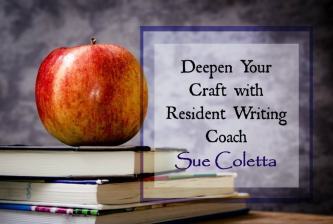
By Sue Coletta
Let���s be honest. Writing a book description isn���t fun. It���s grueling, mind-numbing work that I detest with every inch of my being. Mastering the art of back cover copywriting is an important skill. Therefore, I���m always on the lookout for tips.
A while back, I sat through yet another webinar on the topic, and a formula emerged, a formula that finally resonated with me. So, I figured I���d share my discovery with you in the hopes that it���ll work for you, as well.
A 3-Step Formula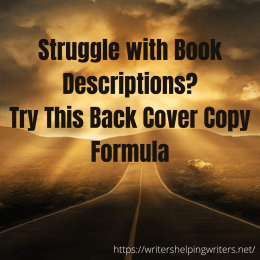
Back cover copy follows a simple three-step formula, but we do have wiggle room to experiment. With readers��� short attention spans these days, the advice is to keep the entire description to roughly 150-200 words. If your description runs 25 words longer than the desired range, I wouldn���t sweat it too much.
Step 1: Headline/HookTo find our hook we need to look at the main conflict of our story. We want readers to identify with said conflict, so don���t shy away from the emotional impact it causes the hero. Don���t dwell on it, either. Every word counts.
The following books sat on Amazon���s Top 10 Bestsellers List in Psychological Thrillers for weeks after the release, and each description employs this exact formula. These authors worked hard on their hooks, and it shows.
What would it take to make you intervene? ��� I Am Watching You by Teresa Driscoll
It begins with a phone call. It ends with a missing child. ��� Guilty by Laura Elliot
When family secrets are unearthed, a woman���s past can become a dangerous place to hide��� ��� Twist of Faith by Ellen J. Green
Every time Gwen closed her eyes, she saw him in her nightmares. Now her eyes are open, and he���s not going away. ��� Killman Creek by Rachel Caine
They were all there the day your sister went missing. Who is lying? Who is next? ��� The Reunion by Samantha Hayes
She���s a daughter he didn���t know he had. Until she calls him��� from death row. ��� 30 Days of Justis by John Ellsworth
What if you discovered your husband was a serial killer? ��� Tell Me I���m Wrong by Adam Croft
Side note: Adam Croft is a master at hooking readers. This next book he wrote after he created the hook. What a doozy, too!
Could you murder your wife to save your daughter? ��� Her Last Tomorrow by Adam Croft
Wow. Right? If that hook doesn���t grab fans of the genre, nothing will.
Step 2: Short SynopsisThe synopsis also follows a micro-formula���
Introduce the protagonist by showing what defines their role in the story.What is that character up against?What���s standing in their way?Transition paragraph or as PJ Parrish calls it, ���The Big But.���End with a cliffhanger.Let���s go back to our examples to see if this micro-formula has merit. The red-bracketed numbers correspond to steps 1-5.
Her Last Tomorrow by Adam Croft
Nick and Tasha are a couple held together by their five-year-old daughter [1]. Until one ordinary morning, when Ellie vanishes amid the chaos of the school run [2].
Nick knows she can���t have gone far on her own, which can mean only one thing: she���s not on her own. Who would take his daughter, and why? With no motive and no leads, Nick is thrown into a tailspin of suspicion and guilt. Like Tasha, he doesn���t know what to think, or whom to trust��� [3]
But then someone starts doing the thinking for him. Confronted with an impossible choice, Nick will have to make a decision, and both options will leave him with blood on his hands. But perhaps that���s to be expected. [4]
After all, Nick���s not quite as blameless as he seems. [5]
I Am Watching You by Teresa Driscoll
When Ella Longfield overhears two attractive young men flirting with teenage girls on a train, she thinks nothing of it���until she realises they are fresh out of prison and her maternal instinct is put on high alert.[1] But just as she���s decided to call for help, something stops her. The next day, she wakes up to the news that one of the girls���beautiful, green-eyed Anna Ballard���has disappeared. [2]
A year later, Anna is still missing. Ella is wracked with guilt over what she failed to do, and she���s not the only one who can���t forget. Someone is sending her threatening letters���letters that make her fear for her life. [3]
Then an anniversary appeal reveals that Anna���s friends and family might have something to hide. Anna���s best friend, Sarah, hasn���t been telling the whole truth about what really happened that night���and her parents have been keeping secrets of their own. [4]
Someone knows where Anna is���and they���re not telling. But they are watching Ella. [5]
Guilty by Laura Elliot
On a warm summer���s morning, thirteen-year-old schoolgirl Constance Lawson is reported missing. [2]
A few days later, Constance���s uncle, Karl Lawson, suddenly finds himself swept up in a media frenzy created by journalist Amanda Bowe implying that he is the prime suspect. [1]
Six years later ��� [4]
Karl���s life is in ruins. His marriage is over, his family destroyed. But the woman who took everything away from him is thriving. With a successful career, husband and a gorgeous baby boy, Amanda���s world is complete. Until the day she receives a phone call and in a heartbeat, she is plunged into every mother���s worst nightmare. [3]
* * *
Even though Guilty played with the order, the description works. The formula still holds. Hence why I mentioned the wiggle room at the beginning of this post. *grin* Also note: some authors put their characters��� names and/or important details in bold, and the words catch the reader���s eye.
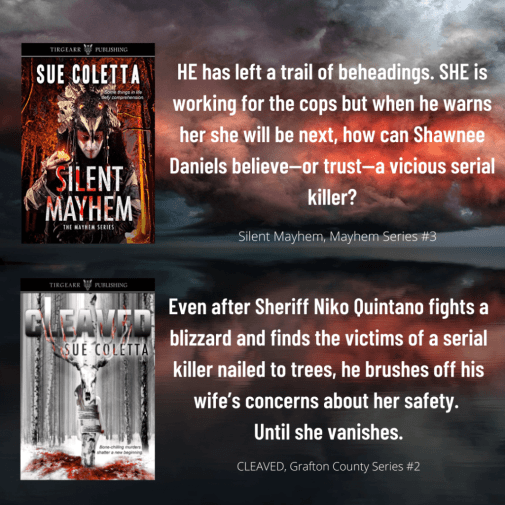 Step 3: Selling Paragraph
Step 3: Selling ParagraphThe selling paragraph answers two variations of the same question that readers ask themselves:
It sounds good, but how do I know it���s for me?
Sounds good, but will I like it?
There���s two ways we can go here, by showing similar books ��� if you enjoyed X, you will love Y ��� or by simply mentioning the genre.
A psychological thriller that keeps you guessing till the last chilling page.
If you like heart-hammering suspense, this book is for you!
A third option is to use clips of reader reviews or blurbs from authors in your genre.
Do you enjoy writing back cover copy?Do you follow a similar formula?
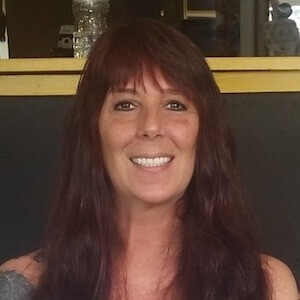 Sue Coletta
Sue ColettaResident Writing Coach
Sue Coletta is an award-winning crime writer. Feedspot and Expertido.org named her Murder Blog as “Best 100 Crime Blogs on the Net” (2018-2021). She also blogs at the popular Kill Zone, writes two psychological thriller series (Tirgearr Publishing), and true crime/narrative nonfiction (Rowman & Littlefield Group, Inc.).
Sue also appeared on the Emmy award-winning true crime series, Storm of Suspicion and will be teaching an advanced education course on serial killers for Foothills Regional (CT).��
Website | Facebook | Twitter | Amazon | Goodreads | BookBub | Instagram | YouTube
The post Back Cover Copy Formula appeared first on WRITERS HELPING WRITERS��.
July 9, 2022
Fear Thesaurus Entry: Love
Debilitating fears are a problem for everyone, an unfortunate part of the human experience. Whether they’re a result of learned behavior as a child, are related to a mental health condition, or stem from a past wounding event, these fears influence a character’s behaviors, habits, beliefs, and personality traits. The compulsion to avoid what they fear will drive characters away from certain people, events, and situations and hold them back in life.��
In your story, this primary fear (or group of fears) will constantly challenge the goal the character is pursuing, tempting them to retreat, settle, and give up on what they want most. Because this fear must be addressed for them to achieve success, balance, and fulfillment, it plays a pivotal part in both character arc and the overall story.
This thesaurus explores the various fears that might be plaguing your character. Use it to understand and utilize fears to fully develop your characters and steer them through their story arc. Please note that this isn’t a self-diagnosis tool. Fears are common in the real world, and while we may at times share similar tendencies as characters, the entry below is for fiction writing purposes only.
 Fear of Love
Fear of LoveNotes
Being loved (and loving others) is a basic need that’s universal to all humans. Yet there are people who fear this kind of true connection and actively or subconsciously avoid it. This fear may emerge in the wake of past negative experiences with the people who should have loved the character most. It can also come about from witnessing harm done to others in the name of love.
What It Looks Like
Being the life of the party but not connecting with people on a deep level
Engaging in romantic relationships that don’t go anywhere
Avoiding any romantic relationships
Dodging deep and meaningful conversations with others
The character overworking themselves to avoid personal commitments
Retreating emotionally
Being inclined to distrust others
Being jaded about love (believing it’s a fallacy, it’s harmful, etc.)
Being harsh, hardened, or abrasive
Choosing unhealthy or toxic relationships
Picking fights to avoid intimacy
Engaging in negative coping behaviors, such as drug or alcohol abuse
Common Internal Struggles
Craving intimacy but being unable to allow themselves to be that vulnerable
Having powerful feelings for someone but being too afraid to act on them
Desiring close relationships but being unable to trust others
Wanting to open up to others but being too scared of disappointing them
The character desiring love but not if it means giving up their personal power
Experiencing flashbacks to past wounding events with people who were supposed to love them
The character knowing they should forgive an -ex for a past hurt but struggling to do so
Engaging in an endless loop of negative self-talk
Suffering with depression or dissociation
Hindrances and Disruptions to the Character’s Life
Consistently responding inappropriately to conflict (which results in more problems)
Potential relationships failing due to the character’s unconscious self-sabotage
Unrealistic partner expectations leading to disappointing relationships
The character being unable to express their needs and desires
Being viewed by others as superficial or emotionally unavailable
Engaging in unhealthy relationships because they feel “normal”
Living in isolation (having given up on love)
Ongoing substance abuse
Engaging in activities that temporarily satisfy a need for connection (joining clubs or volunteer groups, having a string of one-night stands, etc.)
Scenarios That Might Awaken This Fear
A romantic partner’s infidelity
Witnessing abuse (that reawakens memories of the character’s trauma or makes them leery of love)
Being rejected by a potential love interest
Losing a loved one through tragic circumstances
A gay character being rejected by their parents
Being abandoned by a partner, sibling, or guardian
The character’s parents divorcing
The character discovering that their spouse has a separate, secret family
The character being victimized by someone close to them
A romantic relationship progressing toward something significant (which makes the character uncomfortable)
Discovering a friendship wasn’t real���that the “friend” was using the character in some way
Other Fear Thesaurus entries can be found here.
 Need More Descriptive Help?
Need More Descriptive Help?While this thesaurus is still being developed, the rest of our descriptive collection (16 unique thesauri and growing) is accessible through the One Stop for Writers THESAURUS database.
If you like, swing by and check out the video walkthrough for this site, and then give our Free Trial a spin.
The post Fear Thesaurus Entry: Love appeared first on WRITERS HELPING WRITERS��.
July 7, 2022
Traditional vs. Self-Publishing���Which One is Best for You?
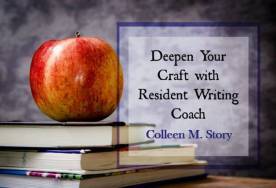
By Colleen M. Story
Have you wondered whether traditional or self-publishing is best for you?
My latest novel, The Beached Ones, releases this summer with CamCat Books. This marks my third traditionally published novel.
I���ve also self-published three nonfiction books for writers.
That means right now, at this stage in my writing career, I���ve published an equal number of books each way.
So which is best?
Below, I discuss good things about each, from my experience.
 3 Pros of Traditional Publishing1. Recognition
3 Pros of Traditional Publishing1. RecognitionAs a traditionally published author, you���ll get a certain level of recognition for your accomplishment. Even though we���ve come a long way with self-publishing, many readers, reviewers, libraries, and bookstores will have more confidence that a traditionally published book will be of high quality.
It is difficult���and has only gotten more difficult over the years���to get a traditional publishing contract. Publishing companies are finding it harder to make a profit today than they did many years ago. That means there are only so many slots each house has to fill, and the competition for those slots is insane.
Should you get one of those slots, you will enjoy the recognition that comes with that. This can be helpful in many ways.
Libraries and bookstores will see you as more ���legitimate��� and may be more inclined to buy copies of your book.You may find it easier to gain entrance as a guest onto some podcasts or video interviews because of your traditional publishing credits. This can help you more easily market yourself as an author.You can use the achievement to bolster your career in other ways. If you want to coach other writers, speak at conferences, or provide writing programs, for example, the fact that you���ve been traditionally published can help establish you as an authority.It plain feels good and helps boost your confidence.Many other writers and readers will respect your achievement.2. The Publisher Makes the InvestmentIf you���ve ever self-published a book, you know that the investment it takes to get a quality book to market can be significant.
You have to pay for the editing, copyediting, and proofreading yourself, as well as the cover design, interior design, ISBN (if you choose to use one), and the like. If you want to do an audiobook, you’re likely to invest even more.
Though some authors do well with a limited budget, it can take $1,500���$5,000 or more to self-publish a good book, particularly if you invest in a few rounds of quality editing. (By far the most expensive part of the process.)
A traditional publisher will take on this investment for you. You don���t have to spend a penny on editing, cover design, interior design, or audio production. With a good publisher, you won���t have to pay for entry into many of the biggest book awards contests, either, such as the Ben Franklin or Foreword Book Awards.
In general, a traditional publishing contract takes most of the financial burden of publishing off your shoulders, and that���s no small thing.
3. The Editing Process is Often Top NotchYes, you can and should hire editors for your self-published book, and yes, you can find some great ones. But if you traditionally publish, you���re likely to gain access to some of the best editors in the business, and that is wonderful for your progression as a writer.
I loved the editing process of my latest novel, The Beached Ones. It was the best of any I���ve enjoyed so far. It helped me make the story as good as it could be while also giving me some valuable wisdom I can apply to my next novel.
 The Pros of Self-Publishing
The Pros of Self-PublishingNow let���s look at some of the great things about self-publishing.
1. You Have ControlThis is the best part of self-publishing. Decisions that are often left up to the publisher���such as what the cover will look like, what offers to put in the back of the book, and when the book will release���are up to you when you self-publish. If you love the graphic design or like to plan out your marketing according to your schedule, you will enjoy this part of the process.
Plus you have control over how many books you release per year. If you���re a prolific writer, this can help you gain traction on the market faster than you would traditionally publishing.
2. You Can See the ResultsOne thing that frustrates me with traditional publishing is that I can’t see the sales numbers in real-time. That means I don���t know if a marketing effort worked very well or not.
When you self-publish, you can check your sales numbers at any time. That means you can run a special, advertise, publish a guest post, put out a video, etc., and immediately see the results. That can help inform your future marketing efforts.
3. You Own the RightsWhen you self-publish, you own the rights to your book. That means you can change it, update it, put on a new cover, or do anything else you like with it at any time.
When you traditionally publish a book, the publishing company takes the rights for a certain amount of time. It���s up to them and the term of your contract when you get those rights returned. Often, it���s years into the future.
That means if you want to change the cover���because maybe it wasn���t as effective as you thought it would be���you can���t. Not until the rights revert to you.
In summary, I have enjoyed both types of publishing and I plan to continue as a hybrid author. What methods you choose will be up to you, but you don���t have to limit yourself. In today���s publishing world, there are many paths to success and you get to forge your own.
 Colleen M. Story
Colleen M. StoryResident Writing Coach
Colleen M. Story inspires writers to overcome modern-day challenges and find creative fulfillment. Your Writing Matters helps writers overcome self-doubt and determine where writing fits in their lives. Writer Get Noticed! was the gold-medal winner in the Reader���s Favorite Book Awards. Overwhelmed Writer Rescue was named Book by Book Publicity���s Best Writing/Publishing Book in 2018, and her novel, Loreena���s Gift, was a Foreword Reviews��� INDIES Book of the Year Awards winner. Find out more at these sites:
Writing and Wellness | Life and Everything After | Teachable | Author Website | Twitter
The post Traditional vs. Self-Publishing���Which One is Best for You? appeared first on WRITERS HELPING WRITERS��.
July 5, 2022
Need Conflict? Just Let Your Characters Talk
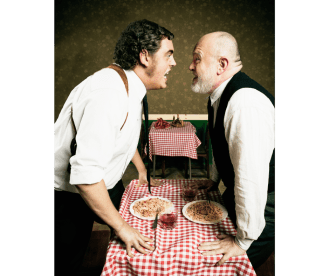
Story conflict has many purposes. It provides opportunities for failure and growth, elevates what���s at stake, and escalates emotion for the character and readers. We also know that our stories will need many instances of conflict, both at the story (macro) and scene (micro) level. But how do we know what kinds to add to the mix?
First and foremost, conflict must further the story. There are lots of interesting and compelling scenarios that we authors might like to pursue. But, as with every aspect of storytelling, we must separate ourselves from the process to make sure we���re not projecting ourselves���our interests and desires���onto the character and the story. Sure, we might want to write a drunken brawl scene, but would that scenario be likely for our protagonist? Will it reveal something about the character, like a weakness or need, or is it just there to ���spice up��� a boring scene?
The best way to incorporate convincing conflict scenarios into a story is to pull them organically from the elements that are already there. Conflict is lurking all around your characters and the story world, so grab a stick and start poking to see what shakes loose.
Start With the Story’s CastWhere does most of our conflict come from in real life? That���s right: other people. Loved ones, extended family, roommates, co-workers, neighbors, friends, complete strangers���each one can cause us grief on a number of levels. The same is true for our characters. Anyone interacting with them is a potential source for trouble.
This is why planning your story���s cast ahead of time can be so beneficial. Think about what kinds of people might have crossed swords with your character at some point, will rub him the wrong way, or have goals that are in opposition to his own. Think about which traits might get under your character���s skin. What attitudes or morals will be difficult for him to accept?
Then���you guessed it���build characters with those traits, habits, histories, and goals into the story. If each character stays true to form, tensions will inevitably rise. Not a planner? Not a problem. When you need a reasonable conflict scenario that will provide a certain outcome, consider who in the character���s life you could use to make that happen. This handy directory of adversaries might provide inspiration in this area.
Let Your Characters TalkOnce you’ve assembled your cast, just let them talk, and conflict is sure to follow. Dialogue is a great troublemaker because it can cause minor, surface-level tension or set the ball rolling for something huge, like the end of a relationship or a global clash. You’re already including it in your story, so make it do double duty and use it to initiate problems for your character. Here are just a few conversational techniques you can use to generate conflict in a scene.
Unintentional Clashes
So much of conflict is unintentional���meaning, the person causing the problem isn���t trying to ruffle feathers. Often, it comes down to basic personality quirks, such as someone who is always interrupting, a tactless party who unknowingly causes offense, or a chronic multitasker who doesn���t listen carefully and makes your character feel undervalued. Of course, any of these irritations can be applied to the protagonist instead of the other party, and you get the same result.
Enough of these slight aggravations can add up throughout one conversation (or over the course of many) and lead to explosions. When a character loses control of their emotions, they are much more apt to speak their mind, cut the other person down, or reveal information they meant to hold back. And what do all of these responses lead to? More conflict.
Confrontational CommunicatorsPurposeful conflict in dialogue can be subtle or overt, depending on the situation and the goal being pursued. The character may be looking to manipulate an exchange to achieve a specific outcome, inflame everyone���s emotions, damage a reputation, or completely eviscerate an enemy with words. Characters who are purposely looking to cause trouble in a conversation might���
Make a threat or say something to intimidateDeploy insults, sarcasm, and belittlementManipulate the conversation toward a topic or away from one Shift the focus to someone else to put them in the hot seat Purposely ask about something that will make the other person uncomfortable Deceive the other party through lies, omissions, and exaggerationsBring up a sensitive topic to provoke an emotional reaction Reveal a secret, stance, or mistake to damage a rival���s standing in the group Ask questions the character knows the other person can���t answer, making them look badCall the protagonist out (for a mistake, something they said or did, etc.) to steal their self- esteem Deliberately provoke an argumentMake insinuations (about someone���s loyalty, capabilities, etc.) to sow doubtMake a derogatory statement and pass it off as a jokeSuggest disloyalty if the other party doesn���t agree, which forces them to do just thatWhen two or more characters are battling it out in conversation, each is seeking the upper hand. The exchange may appear respectful if others are watching or a certain level of decorum must be observed. In these cases, it may not be what the characters say as much as how they say it, or what doublespeak or innuendo they can safely deploy to score a hit that will go over someone’s head. When a comment does leave a mark, show it by using body language, facial tics, and vocal shifts to reveal the character’s waning level of emotional restraint.
Opposing MotivationsOne of the main drivers for conflict in dialogue is that the parties involved don’t always have the same purposes. One person might be trying to connect with the protagonist while the protagonist only wants to gain information. One may be seeking to protect a secret while the other is trying to bring it to light. Another person might be pursuing a conversation because they want to show off their knowledge while the other participant only wants to prove their own rightness.
Motivation plays a huge part in conflict development at all story levels because conflict typically arises when characters don���t get what they want. So when you���re planning your protagonist���s conversations, consider what they’re after. What are they hoping to achieve through that discussion? Then pit them against someone whose goal is in opposition to theirs.

This is just a sampling of the conversational techniques you can use to generate authentic conflict. If you���re ever at a loss for ideas, think about the conversations you���ve recently had that irked you, even a little bit. Examine the tactics involved and add them to your character���s interactions with others.
For more information on how to effectively and genuinely add this important storytelling element to your writing, check out The Conflict Thesaurus: A Writer’s Guide to Obstacles, Adversaries, and Inner Struggles.
We can’t wait to share the the second volume of The Conflict Thesaurus with you on September 6! If you’re hungry for more story conflict now, we’ve recently doubled the Conflict Thesaurus at One Stop for Writers. You���ll find over 230 unique conflict scenarios broken down by category.
The post Need Conflict? Just Let Your Characters Talk appeared first on WRITERS HELPING WRITERS��.
July 2, 2022
Fear Thesaurus Entry: Mediocrity
Debilitating fears are a problem for everyone, an unfortunate part of the human experience. Whether they’re a result of learned behavior as a child, are related to a mental health condition, or stem from a past wounding event, these fears influence a character’s behaviors, habits, beliefs, and personality traits. The compulsion to avoid what they fear will drive characters away from certain people, events, and situations and hold them back in life.
In your story, this primary fear (or group of fears) will constantly challenge the goal the character is pursuing, tempting them to retreat, settle, and give up on what they want most. Because this fear must be addressed for them to achieve success, balance, and fulfillment, it plays a pivotal part in both character arc and the overall story.
This thesaurus explores the various fears that might be plaguing your character. Use it to understand and utilize fears to fully develop your characters and steer them through their story arc. Please note that this isn’t a self-diagnosis tool. Fears are common in the real world, and while we may at times share similar tendencies as characters, the entry below is for fiction writing purposes only.
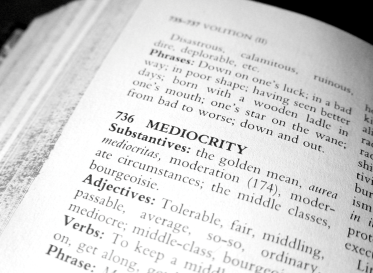 Fear of Mediocrity
Fear of MediocrityNotes
The fear of mediocrity is a double-edged sword. On one hand, it can drive the character to do their very best, rising to all occasions and overcoming the obstacles that stand in their way on the path to success. The dark side of this fear comes when it is based on external validation. Needing the admiration of their peers instead of basing their success and value on their uniqueness and areas of strength is a recipe for disaster.
What It Looks Like
The character being hyper-critical of themselves
Searching for purpose in life
Wanting to be extraordinary
Difficulty accepting criticism
Becoming anxious as deadlines approach
Being a perfectionist
The character comparing themselves unfairly to others
Needing external validation
Desiring superiority over others
Refusing to accept mediocrity in others
Having unrealistic expectations
The character basing their value on the opinions of others
Being envious of other people’s accomplishments
Being scared to take risks (because they could result in failure)
Being an overachiever
Having a large ego
Exhibiting narcissistic tendencies
Pointing out other people’s flaws (to counteract their feelings of inferiority)
Going to extremes to prove themselves (getting plastic surgery to improve their appearance, amassing debt to maintain a certain lifestyle, etc.)
Common Internal Struggles
Putting off a new endeavor or adventure for fear of criticism
Not choosing a desired career path because it’s too ordinary
The character wrestling with depression when they fall short of a goal
Feeling demeaned at the slightest criticism
Berating themselves over simple mistakes
Becoming resentful when they don’t receive recognition they feel is warranted
Being overwhelmed with self-doubt and feelings of inadequacy
Hindrances and Disruptions to the Character’s Life
Being dissatisfied with significant accomplishments
Constantly being plagued with self-doubt about their abilities
The character living below their potential because they’re afraid to take risks
Needing the praise of people the character admires before they can claim success
Being unfulfilled socially or relationally because the character is focused on achieving goals
Always feeling second-best because the character is comparing themselves to others and coming up short
Frequently burning out
Scenarios That Might Awaken This Fear
Being eclipsed by a successful sibling
The character not winning a competition or contest
Being told they will never amount to anything
Being passed over for a promotion
Seeing an ex-partner with someone the character perceives to be better in some way than the character
Observing someone being showered with accolades and desiring the same
Being assigned a ho-hum role or project where there is no chance to shine
Being teamed up with a partner who is superior to the character (in an area of giftedness, with other people, etc.)
Other Fear Thesaurus entries can be found here.
 Need More Descriptive Help?
Need More Descriptive Help?While this thesaurus is still being developed, the rest of our descriptive collection (16 unique thesauri and growing) is accessible through the One Stop for Writers THESAURUS database.
If you like, swing by and check out the video walkthrough for this site, and then give our Free Trial a spin.
The post Fear Thesaurus Entry: Mediocrity appeared first on WRITERS HELPING WRITERS��.
June 30, 2022
Avoiding Stereotypes in Fiction: People of Color
Readers have spoken: they want more diversity in fiction. And writers are stepping up, but it can be hard to write about someone who���s different than you. Careful research is the key to avoiding misrepresentation, which causes harm to the very identities being portrayed and creates fallout for well-meaning writers when they���re called out by readers.
For this reason, we���re running a series of posts on avoiding stereotypes in fiction. Written by a diverse cast of talented authors, each post highlights a different people group���the common stereotypes to avoid and how to write those characters realistically. We hope this series arms you with the knowledge and tools to write characters you may have been reluctant to write before���ones that will take your story to the next level.
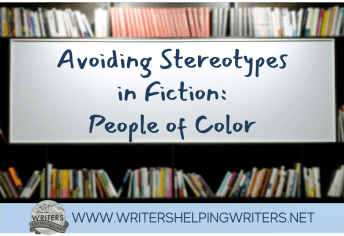
By: Hyacinthe M. Miller
Where to begin a conversation about stereotypes of People of Color (POC)? This is a fraught topic. For clarity, let���s start with a definition for this term:
People of Color: Applying to non-White racial or ethnic groups; generally used as an alternative to the term ���visible minority.���
Be aware, though, that some members of ethnic and racial groups take issue with being lumped together as POCs rather than being treated as unique. Others, however, embrace Racialized or POC as terms of solidarity and empowerment.
As writers, we have a role to play in ensuring that the worlds we create are representative of the broad spectrum of personalities, identities, traits, cultures and races in our communities. Whether we���re talking protagonists, villains, or supporting characters, let���s keep them entertaining, fully formed and authentic. What do I mean by ���authentic���? Believable, realistic, genuine individuals. Mind you, that���s a best practice for any character you create, isn���t it?
Let���s talk about some of the common stereotypes that have been used in portrayals of Racialized People.
Angry/Hysterical/Powerless WomenThere are numerous examples in print and visual media, where women are portrayed as aggressive, outspoken, shrill, helpless or downright cranky. In real life, we experience a variety of emotions ��� let your characters show them as well.
Angry MenThese male counterparts careen through life ignoring social norms, raging at ���the Man��� or unspecified targets, taking personal risks, committing crimes, or abusing those who get in their way. Male and female stereotypes use similar gestures and language to convey a limited range of emotions ��� the steely-eyed stare, a swaggering insolence, or a know-it-all attitude that invariably lands them in trouble.
Silent SufferersThe opposite is the submissive, ���seen but not heard��� person of color of any gender who invariably is struggling against adversity but who is a noble role model because they carry on. Maids, doormen, taxi drivers, teachers, nurses and restaurant workers are common occupations.
Sex ObjectsPortraying racialized women as attractive but tough (using their wiles and weaponry to fight injustice) devalues them. A male protagonist like Black private detective John Shaft, described as a ���sex machine���, harks back to the trope of Black men being randy and predatory.
The Phoenix from the AshesPerformers, athletes, or professionals are often portrayed as rising up from poverty to fame or as promiscuous, hard-edged rule-breakers. This ignores the reality that most people of color are also soccer moms, bankers, and emergency service providers working hard and living ordinary lives.
Straw Character CaricaturesThese cartoonish depictions of gangbangers, career criminals, barbers and hairdressers who always have the last word, the whore with the heart of gold, the struggling single mom, the sharp-tongued taxi driver, the weary, hard-working racialized father or the deadbeat dad, the wise-cracking sidekick, flamboyant roommate, spunky girlfriend, or plucky survivor are stale tropes. The common denominator of each is lack of nuance.
What To Do
Rest assured, it is acceptable to write about racialized characters. Wouldn���t your fictional world be monochromatic and boring if you didn���t? Yes, complexion, ethnicity, physique and hairdo help define an individual, but if you take away those external identifiers and still have a realistic human being, you���ve done your job. Applying your skills to build worlds that include a range of well-crafted characters enriches the final product. We’re unique individuals trying to live our best lives.
What about, ���write what you know���? Research and learn about the diversity of cultures, religions, and races. Leave assumptions at the curb. Join inclusive organizations. Ask respectful questions. Read the works of authors of color. Dig beyond the obvious to show your character���s true identity.
What Not to DoDon’t avoid describing someone’s race, but make sure you���re accurate, e.g., a broad nose, small ears and full lips could describe a person of Asian or African heritage. Say, ���Amir, a young man from Bangalore���, or ���Tasha, a tall Black woman from Manchester���. Use names that identify their ethnic origin. Keep in mind, though, that with the globalization of relationships, someone called Sue-Lin Mackenzie could be a mixed-race woman of Korean/Scottish descent.
Don’t describe us using food terms. Instead of chocolate, almond or coffee, say, ���light brown��� or ���dark brown complexion���. Be aware that the word ���Brown��� is often used by people of Southeast Asian heritage (Russell Peters).
Don’t focus on externals Iike hair styles, complexion, or physical appearance. As with any other character, include descriptors that are relevant.
Don���t be patronizing. Unless it���s relevant, describing a Black person or person of color as ���articulate��� implies there was no expectation that they had mastered the English language.
Remember…Everyone has biases, whether about cars, food, or music.Words can wound. They have history and power. Choose carefully.Clothing as costume, artifacts and symbols can contribute to a rich, scenic world or they can stigmatize, e.g., tattoos and piercings, head coverings, jewelry, behavior, and speech.Competent sensitivity readers serve a role but remember, you are getting a single perspective that may not align with the lived experiences of all your diverse characters.Writing multi-dimensional characters requires an open mind, accuracy, and kindness. Diverse cultural perspectives can literally bring color to your writing via family events or celebrations. Whether your characters are funny or sad, strong or weak, forgettable or memorable, your readers will resonate with their authenticity.Resources
Writing With Color: Posts on Describing People of Color
Ten Tips on Writing Race in Novels
The Do’s of Writing People of Color: Describe Your Characters
Writing Characters of Different Races and Ethnicities
Other posts in this series:
Avoiding Female Character Stereotypes
Avoiding LGBTQ+ Character Stereotypes
Avoiding Religious Character Stereotypes
Avoiding Mental Health Character Stereotypes
Discussion is encouraged, but please keep it courteous. Let���s not call out authors for past mistakes, and let���s do keep an open mind. By listening to and respecting each person���s experiences and perspectives, we can better write the stories and characters readers want to see.

Hyacinthe M. Miller is an award-winning author of short stories, contemporary women’s fiction and non-fiction. She’s been published in Borealis magazine, Herotica 7, Whispered Words, and Allucinor, The Elements of Romance anthologies. Her debut novel, Kenora Reinvented, (Investigations, Mystery and Seasoned Romance) was published in 2019. Current WIPs include The Fifth Man, book two of the Kenora & Jake series, and a literary memoir.
Hyacinthe is Chair of Crime Writers of Canada, a member of Toronto Sisters in Crime and The Writers Union of Canada and is a founding member and Past President of the Writers Community of York Region. Check out Hyacinthe���s blog, Twitter, Instagram, and Facebook page.
The post Avoiding Stereotypes in Fiction: People of Color appeared first on WRITERS HELPING WRITERS��.
June 28, 2022
3 Design Secrets for Captivating Book Ads
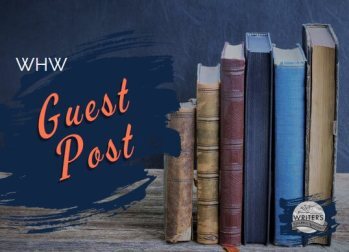
By Teresa Conner
With so many books in the world and ads on every platform imaginable, social media can often feel like screaming into a void. In order to get any traction, you need ad design that gets noticed by your ideal reader or target audience. Following these 3 tips will give you a bit of a secret sauce foundation for capturing those clicks.
(Note: In this article, I will specifically be talking about static ads, but all of these tips can also be applied to video ads.)
Catch Readers��� AttentionBefore a reader can act on your ad, it needs to draw them in and stand out from the countless other ads vying for their eyeballs. The principles you need to consider when designing are: contrast, legibility, white or negative space, genre expectations, and essentialism.
Just as your book cover should meet genre expectations for readers, so should your promotional graphics. If you���re writing dark and gritty mystery, don���t have pastel colors on your ads and so on. Just as film goers are used to genre conventions in movie poster design, so are readers with book design. Know your market and keep ads relatable to them.
Contrast is the difference between two or more elements in a design or layout. The bigger the difference, the better something can be read, processed, and understood by the viewer. Catch readers��� eyes with sharp contrasting colors. Think of a black background with a bright yellow text. The difference in those colors creates contrast.
But also keep accessibility in mind. Check out WebAIM���s Contrast Checker to see if your chosen colors are accessible to readers with visual disabilities. You want your chosen shades to have enough distance between them on the brightness/luminance spectrum. Here���s an example of insufficient contrast versus good contrast:


Both blues match the image, yes, but only one offers enough contrast to be easily read against the pale background.
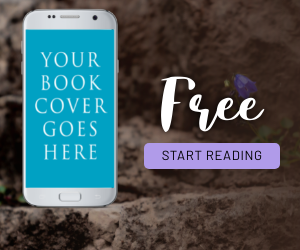
Choose typography (fonts) that are easy to read. Sticking with serif or sans-serif fonts for the majority of your image is the best advice. If you must use a display, script, or brush font, make it large and perhaps only use it for one attention-grabbing word, such as FREE, as I did in this Bookbub Ad example.
Being mindful of how much text is on your ad is crucial. You want readers to focus on the most important part (sale price, release date, blurb, review, etc). Sparse text also creates a pleasing visual full of white space. No one likes cluttered graphics. Just as your book���s plot shouldn���t be stuffed with unnecessary things, neither should your promo graphics. Elements need room to breathe, and simplicity appeals to a greater audience. Do less, and do it better.
Make Your OfferIn order to get potential readers clicking on your ads, you must make certain your graphic (referred to in marketing by some as a ���creative���) has a crystal clear message. This means, you should make your book (the product ��� yes, I know, authors hate thinking of their art as a product but it is) the star of the show.
According to Facebook , ���product-focused creative drives business results more efficiently, with 71% more content views versus creatives without a clear product focus.���
Consider the size of your product and the visual placement. Don���t be too vague. Users will only take 1-2 seconds to look at your ad before they decide to stop or to keep scrolling. If your product is a mystery, odds of them clicking on it lower drastically. Don���t let them wonder. But also don���t stuff too much information into your ad. Laser focus on one message���be that a sale/discount, a new release, a one-line review or endorsement, etc. Pertinent info only.
Encourage Readers to ActNow that we have the design streamlined and the focus solely on your book, let���s make the Call to Action on your ad clear and obvious. A Call to Action (CTA) is marketing copy that encourages the audience to take a particular, desired action in their buyer���s journey. In the case of book marketing, you want them to eventually make a purchase, download a freebie, or subscribe to your newsletter, for instance.

A CTA could be in text format only or be enclosed in a button design. It could be the main part of your ad or a secondary portion. Examples of Calls to Action are: Grab this book, Click Here, Buy Now, Read Now, Sign Up, Subscribe, Learn More, Get, Download Here, Join Us, etc. As you can see, they are centered around action verbs. Sometimes they are focused around creating a sense of urgency, but not always.
It might seem like CTAs are pointless because isn���t the point of an ad to click it? But humans are more apt to act when they are explicitly told to. According to conversion consultant Jeremy Smith, ���The CTA reinforces our psychological sense of reward. We take action based on what we perceive the reward to be. After receiving rewards for certain actions, we develop learned conditions that predispose us to take the same action that leads to the same reward.���
Putting these guidelines into play will have your ads seeing greater conversion rates than before. Now, go forth and sell your books! 
_________________

Want to learn how Book Brush can help you with image creation? Join Kathleen on Tuesday, July 12th at 1pm Central for a FREE webinar. Register Now.
Can���t make it live? Check out Book Brush���s demo page, which is always available with tips and tricks on how to use our platform. You can also sign up to our Platinum plan and view the Sell More with Facebook Ads Platinum Academy class with Skye Warren.
_________________
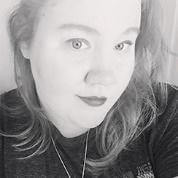
Teresa Conner is Lead Graphic Designer at Book Brush. When not creating graphics for Book Brush or book covers for indie authors and traditional publishers, Teresa can be found writing erotic romance under her pen name Torrance Sen��.
You can find her social media accounts and learn more about her at www.wolfsparrowcovers.com or www.torrancesene.com.
The post 3 Design Secrets for Captivating Book Ads appeared first on WRITERS HELPING WRITERS��.
Writers Helping Writers
- Angela Ackerman's profile
- 1014 followers



